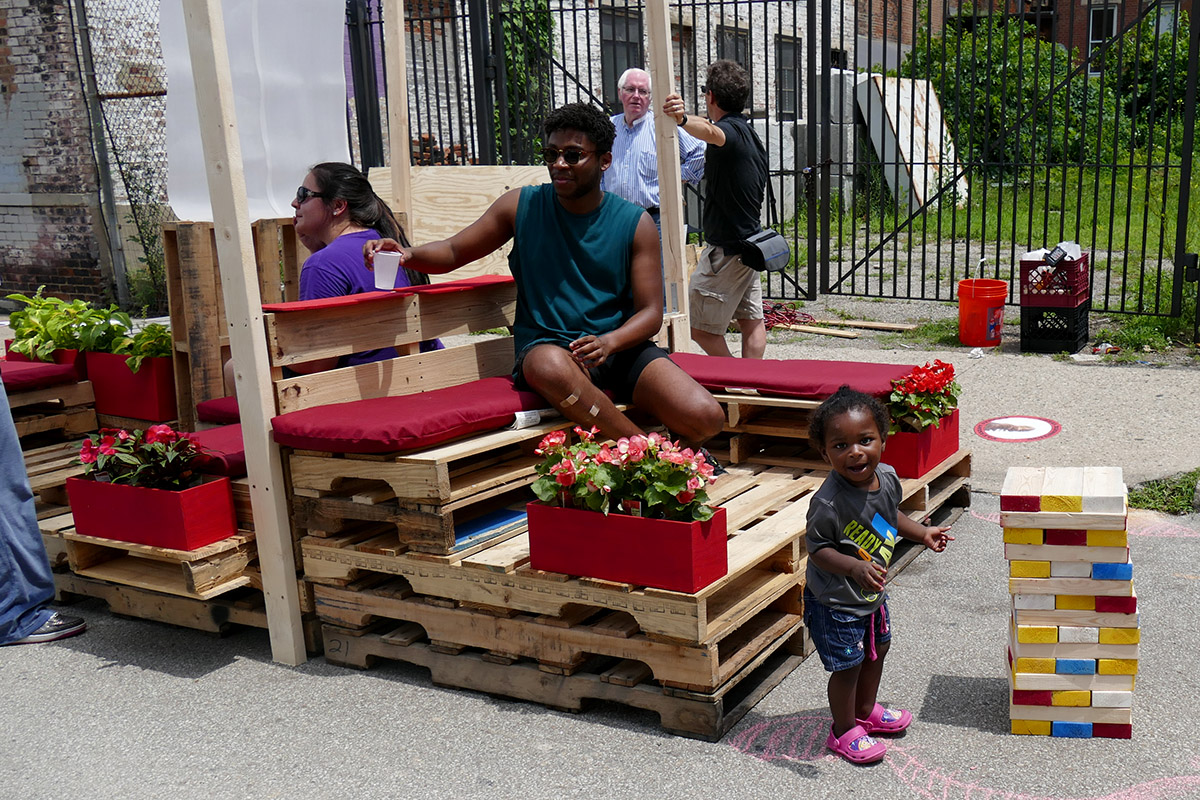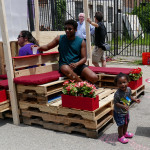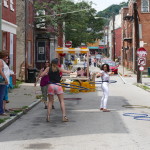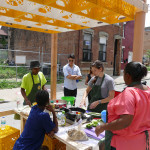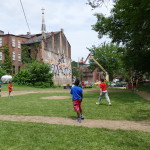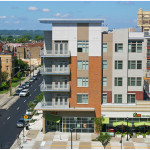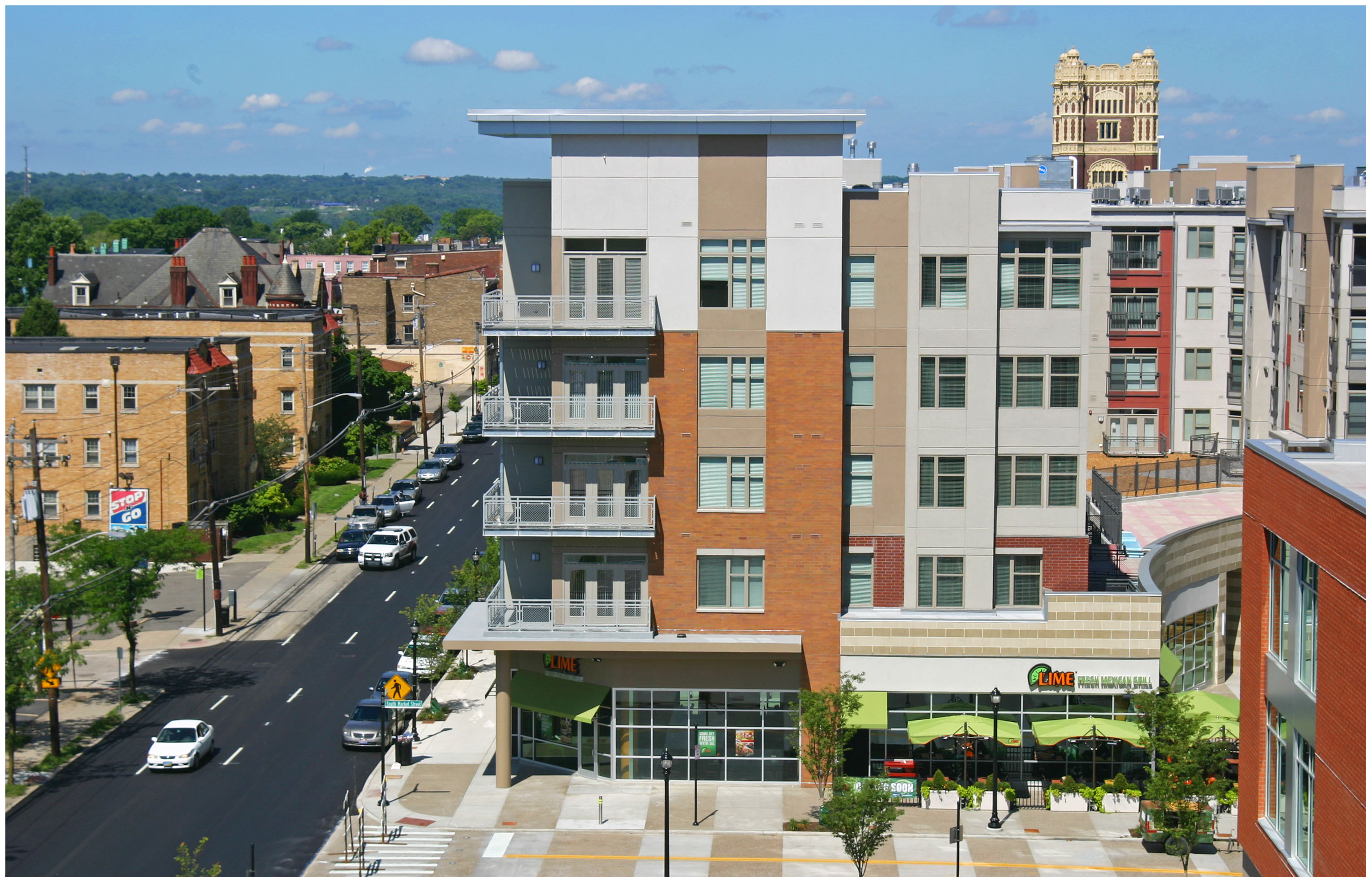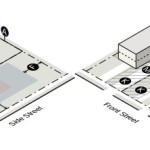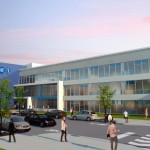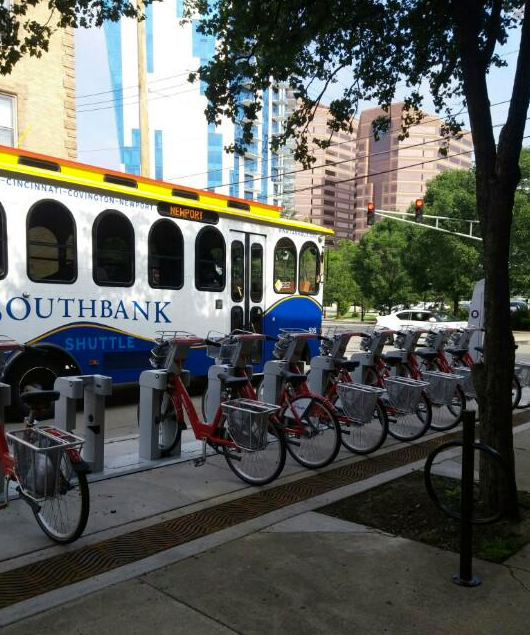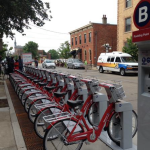A coalition of community organizations organized a public event on July 11 that encouraged people to explore Pleasant Street and showcase it as a model pedestrian pathway connecting two of Over-the-Rhine’s biggest anchors.
Neighborhood leaders have long wanted to better connect Washington Park with Findlay Market via Pleasant Street. The effort really gained traction when the first phase of City Home was developed at the southern terminus of the street in 2012. Prior to that, however, the street was one of the worst in the neighborhood in terms of the status of its buildings and the street itself. That has changed.
The recently held event closed off the narrow street to vehicular traffic so that people could better visualize how a pedestrian-friendly Pleasant Street might look and feel.
In coordination with that event, an ongoing public art project, entitled Alternate Steps, has overseen the installation of several pop-up pocket parks along the corridor between Washington Park and Findlay Market. The first example of this is a wiffle ball field that doubles as a working garden that supports Findlay Market’s other production gardens.
Built adjacent to the former AVP Volleyball court, Field of Greens is a partnership between People’s Liberty, Findlay Market, 3CDC, OTR Community Council, and a bundle of classes at the University of Cincinnati.
Organizers say the overarching goal is to foster a better connection between the areas both north and south of Liberty Street in OTR.
“The idea is to encourage pedestrian traffic,” said Erica Bolenbaugh. “Actually thousands of people walked by today and we are in hope to have them provide feedback on which options are most appealing.”
The most recent part of this effort is a seating option made with tires that was designed by a graduate-level architecture program at UC. The participants in the MetroLAB program say that they have been working with residents through various community engagement activities to determine how residents and the community would like to use the street.
“It was very important for us to engage the Pleasant Street community in this process,” explained Findlay Market’s executive director, Joe Hansbauer. “We wanted this project to be as community-led as possible.”
While the redevelopment of Over-the-Rhine has come with some criticisms that it has not been inclusive enough, considering the diverse range of incomes in the neighborhood, the university team is working to show that even good design and ideas can be implemented and used by everyone.
As a result the MetroLAB team designed an outdoor kitchen, that they hope to install soon, that was made of used plastic baskets. The idea is that it is something that is scalable and can be done by just about anyone, regardless of their economic standing.
“We used low price materials to let people know that this is something that they could build in their own backyard,” Michael Zaretsky, Director of MetroLAB, told UrbanCincy. “We are working on a permit for one of those parklets; hopefully we can make this great idea come true in the early August.”
